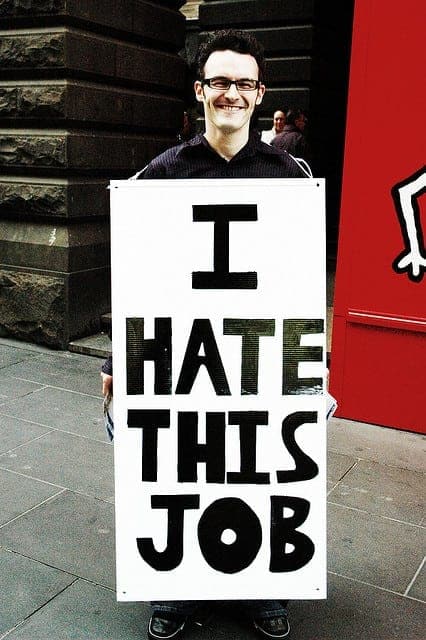
Empty Pockets
This article title is sure promising a lot right up front. Sounds too good to be true right?
Well, yes and no. In this article, I will cover the two blockers that prevent most people from ever getting into day trading – lack of funds and your day job; however, I will also provide the remedy for how to navigate around both.
Lack of Funds and the role of the SEC
So, what in the world does the SEC have to do with the lack of funds?
Day trading is an endeavor that takes time to master and along the way, you are likely to experience emotional and financial pain. As I tell all traders, this is your tuition costs for entrance into the exclusive club of profitable investors.
Yet, instead of being able to scale into day trading with limited funds to test the waters, the SEC requires retail investors to have $25,000 cash on hand to make 4 or more day trades in a 5-day period. If your account drops below $25,000, then you are tagged as a pattern day trader and your account is essentially frozen for 90 days. Essentially, you need to have more than $30,000 because a few bad trades can quickly take you under the threshold.
If you were planning to make a side income from day trading, going 90 days without collecting any money would be a horrible wage.
I wrote an article covering creative ways you can get around the $25,000 minimum, but all of these will require some flexibility on your part. If you like things simple and straightforward, then opening multiple accounts and trading through prop firms is probably not a path you would want to take.
Unfortunately, in this case, the law is the law and as law-abiding citizens, we have no choice but to comply.
There is a Minimum Cost of Entry
You will read on the internet about traders that have made a fortune day trading starting out with less than $5,000 dollars, but I think these are truly the unicorns of our industry. For me it comes down to how much money you need to cover commissions, which on a small account kills your ability to turn a profit.
For this reason, I do not recommend investing with really small amounts of cash. If you trying to make a fortune starting out with less than a $1,000 dollars, you will either end up over leveraging yourself, or holding on for the home run trade in order to cover trading commissions.
Your Job

Your Job
Outside of the lack of funds, the next major deterrent I hear from people looking to get into day trading is that fact they have a job.
Unlike other side businesses, which you can work late at night or on the weekends, day trading requires you to be available from 9:30 am to 4:00 pm. Now you may not have to sit at your desk for the entire six and a half hours, but you have to be attentive during some portion of the day.
So, how do you ever start day trading with a demanding job?
Well, if the job is the issue then why not just quit and chase your dreams? Oh how cool and liberating that sounds.
Let’s pump the breaks a little before you get too excited. Remember, you have not proven to yourself you can day trade successfully and you kind of need your job for now in order to make ends meet.
The Answer – International Trading

International Flags
I realize thus far the article has been a bit of a Debbie Downer, but this is the harsh reality for many would be day trading participants. You so want to get involved, but money and time are always the two factors holding you back.
Well, there is another way. This will require some flexibility on your part and that is the option of day trading the international markets. Before you react too quickly to that statement, let us walk through why this could be your way in to the game.
No Pattern Day Trading Requirements
Most international markets do not have the pattern day trading requirement.
Leave it up to the US to overreact to the tech bubble from the late 90s and then never reassess the law to see if it makes sense. To be honest, it probably has little impact on protecting small investors, as they will likely just save up the $25,000 dollars, resulting in a bigger loss in the end.
With the pattern day trading requirement out of the way, you could start with anywhere from $5,000 to $20,000. Just remember you need to be able to cover commissions; time will do the rest in terms of growing your equity curve.
You can still trade Stocks
In the last five years, there have been many breakthroughs in terms of access to global markets. One of which, is that you can now trade on international stock exchanges. Historically, if you wanted to trade international markets, you needed to day trade forex or futures.
Now you do not have to worry about getting into these sophisticated instruments and can still focus on stocks through a number of domestic brokerage firms, which we will cover later in the article.
You can Trade Outside of Work Hours
The beauty of international markets is that they trade during different time zones. This means you can find a time that works for you and your schedule. For example, if you are a day trader living on the east coast, you could day trade Australia or Japan which open at 8 pm Eastern.
If you are a day trader on the west coast, you could day trade the Hong Kong Stock Exchange which opens at 6 pm Western time.
Point is you can day trade and still keep the checks coming in from your day job.
Commissions are now Reasonable
Years ago, the commission structure made international trading unreachable for the average retail investor. While the rates are higher than US domestic commissions, you are able to place trades for under 20 bucks each way. You will likely end up with a total round trip commission of $20 to $30 bucks.
Again, going back to the previous section on the amount of money needed to get started; you just need to make sure you have enough to cover these commission costs.
Markets are Different, Human Nature Is the Same
Before you start trading any market, you need to first observe their price action. For example, in the US lunch trading is the dead zone with little trading activity. Does your international market of choice behave the same way?
I think you get the point, each country will have its own trading culture, but at the end of the day, trading patterns that work in the US will work the same in Japan. Remember, we are dealing with the raw human emotions of greed and fear.
There are tons of Markets to Trade
There are now over 15 to 20 international markets you can trade in North America, Europe and Asia. The opportunities are truly limitless.
You will need Support
If you have a family, spouse, or anyone that counts on you on a daily basis, you will need their support. They will have to understand that while it is Sunday evening, Japan opens up at 8 pm, so you will not be able to watch this week’s Sunday night game.
As long as you have the support of your family, you will do just fine. Remember, day trading at work is difficult due to the distractions, so can day trading from home if your family members do not respect the privacy and time you need to focus on your trading.
In Summary
You can day trade starting out with a small amount of money and during times that work best for your schedule. I think it goes without saying that you of course need to define your trading strategy, have spent a considerable about of time paper trading in the market you plan to invest and have the time required to day trade on a consistent basis.
While it may seem a bit out there to start trading in Japan with 4 digit stock symbols, the alternatives are probably even crazier when you really think about them. For example, saving up a ton of money that you may end up losing or trying to day trade at work, or for my big risk takers, leaving your job on blind faith without knowing where things will land.
Brokerage Firms that offer International Trading
In the US, we do not have a ton of firms that provide day trading on international markets, but below is a list of the top ones I could find doing a search on Google:
Fidelity
Scottrade
TD Direct Investing
Charles Schwab
Interactive Brokers
When evaluating each broker you will want to take into account the following:
- Ability to short stocks on the international exchange you are targeting
- Data delays
- Delays in order execution
- Commission structures (flat rate or by share)
- Customer Support
- Quality of trading platform
Please note that Tradingsim does not have any affiliate arrangements with any of the aforementioned firms. Just wanted to make that clear up front.
You will want to do an exhaustive review of each firm to identify which one best suits your trading needs.
Good Luck Trading,
Al
Photo Credit
Empty Pockets by Dan Moyle
Job by Yasser Alghofily
International Flags by Viv Walker









 Trading Discipline
Trading Discipline 
